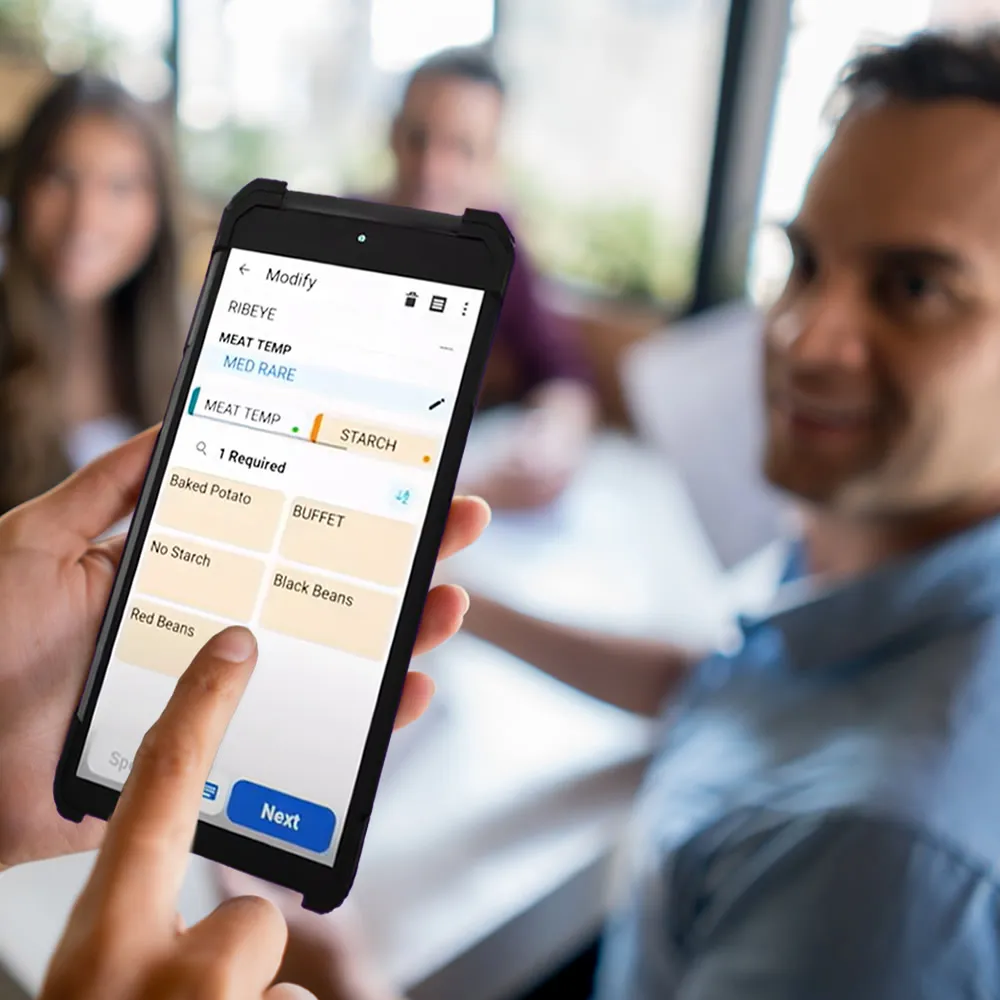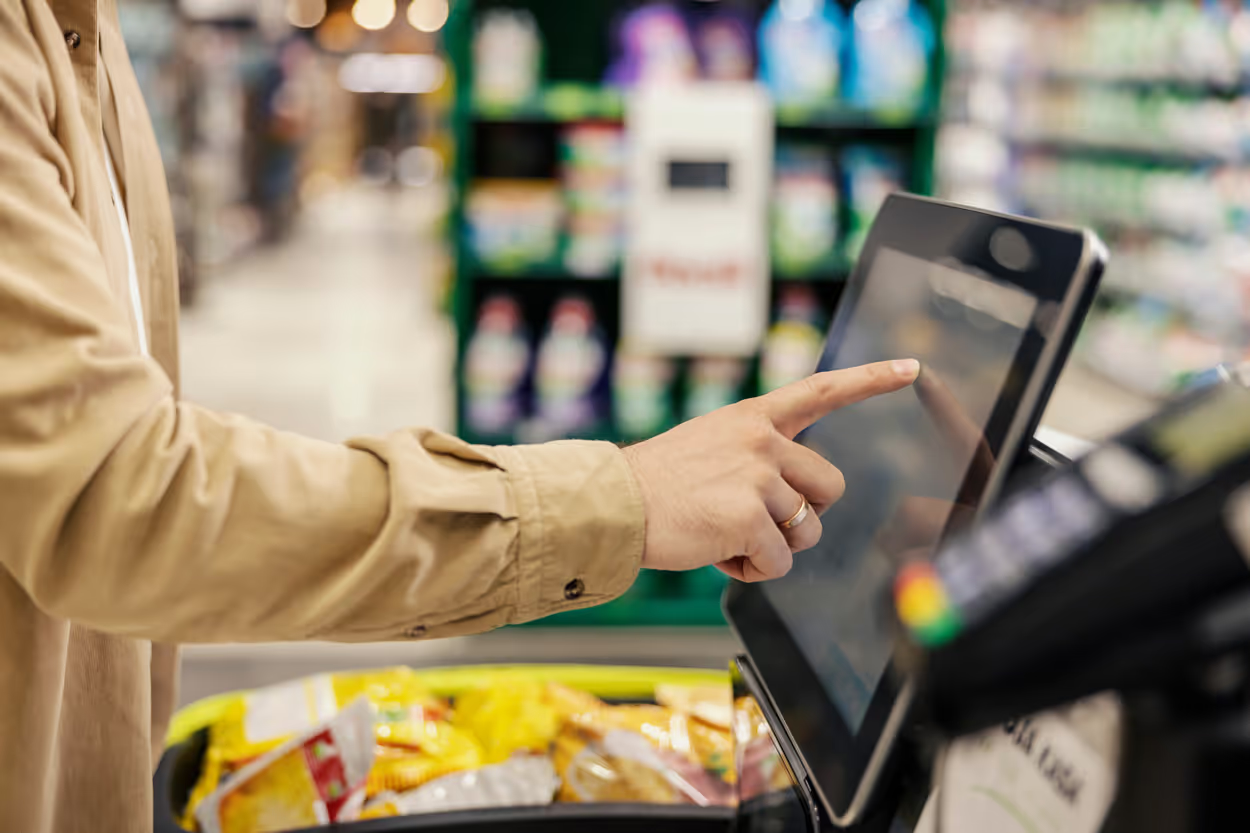Watch the Fintech South 2021 video

The past 12 months have been momentous for us all. The retail sector has been at the forefront of many of the changes and challenges that have arisen as a result of the pandemic. While some brick-and-mortar stores have spent much of the last 12 months closed, the pandemic has driven innovation and fueled a huge acceleration in what was already an emerging new face of retail.
How the pandemic accelerated the shift in consumer expectations
There has never been a better time to go shopping. And there has never been a tougher time to run a shop. Over the past few years, consumers have shifted an increasing share of their purchases to ecommerce, and COVID-19 has accelerated this trend.
The pandemic might have changed some consumer behaviors permanently. We’ve seen a consolidation of shopping trips: in China, for example, the number of transactions in grocery declined by 30 percent during the pandemic (JP Morgan 2020), while the average value per transaction increased by 69 percent (JP Morgan 2020).
In the United States, eCommerce availability and hygiene considerations are increasing store switching behavior, with 17 percent of consumers shifting away from their primary store (McKinsey 2021). Many customers have also tried new omnichannel models: buy online, pick up in store (BOPIS) grew 28 percent year-over-year in February 2020 compared with 18 percent in January 2020 prior to the pandemic, and grocery delivery is up by 57 percent (McKinsey 2020).
More important, many of these new engagement models are here to stay; consumers report high intention to continue using models such as BOPIS and grocery delivery after the pandemic. To remain relevant in this changed environment, retailers should set a North Star to guide their aspirations for customer experience, with specific goals to inject innovation into their omnichannel strategy.
There has never been a better time to go shopping. And there has never been a tougher time to run a shop.
Capitalizing on innovation to propel retailers out of COVID-19
Crises are adrenaline for innovation. It’s a pattern manifested throughout history: a significant economic or social disruption creates a market need or shift in behavior that innovators use as a launchpad for new products, services, and business models. In the 1940s, manufacturers of home appliances and convenience technologies responded to the needs of women who entered the workforce and were spending less time at home.
The SARS epidemic that ravaged Asia in 2002 and led its citizens to shelter in place kick-started widespread adoption of e-commerce in the region, making China the epicenter of innovation in online transactions and social commerce. Similarly, the COVID-19 crisis catalyzed an almost overnight reinvention of the restaurant industry as digital menus accessed via QR codes redefined the table ordering processes and eateries set up “dark kitchens” to enable large-scale preparation of food for delivery.
The fact of the matter is consumers can now find, buy and receive products in a multiplying number of ways. Where shopping was a chore, it now gets done in a few clicks. Where it was a pleasure, it has now expanded into a journey of discovery.
All this depends on a stream of innovations—in fields as diverse as online interfaces, store operations, and delivery. But innovation often means disruption, with new business models being created. Many of the new models are coming from pure play direct-to-consumer (DTC) retailers wanting in on the physical retail footprint and its re-invention.
When I started my career as a strategy and innovation consultant in the post dot.com bubble era, innovation was largely driven out of R&D centers that were invention houses. Today, innovation is viewed as an agile, cross-functional approach that designs solutions by aggregating elements of the solution. You must make decisions quickly under extremely uncertain conditions, and you never have enough time or information to fully weigh difficult choices that may affect both employee livelihoods and the survival of the business. Yet these very constraints can unleash waves of creativity.
When I started my career as a strategy and innovation consultant in the post dot.com bubble era, innovation was largely driven out of R&D centers that were invention houses. Today, innovation is viewed as an agile, cross-functional approach that designs solutions by aggregating elements of the solution.
A store designed as an experience just for me
The ‘one size fits all’ retail strategy that helped brick-and-mortar retailers scale up can no longer survive. It’s hard for individual customers to emotionally connect to store experiences that try to serve the needs of every potential customer.
The store of the future is channel-less. It’s no longer about brick and mortar versus eCommerce, but how both together create a one-of-a-kind experience of your brand. Too many businesses think about retail in terms of different channels, where online and physical retail are treated differently and then integrated. In reality, from a consumer’s perspective these channels are only different touchpoints along the pathway.
Retail is everywhere. It’s a complex ecosystem of physical and digital spaces whose purpose extends far beyond displaying and selling products and services. Retail is now a paradigm of many things merged—functional consumption, social interactions, fun, entertainment and learning experiences.
To capitalize on these trends, the most successful businesses have become more than just retailers. By tracking customer interactions across all touchpoints, they are now data businesses that can draw on a vast bank of consumer insights to personalize and enhance the shopping experience.
A smart POS system can help you gather the customer data that you need to personalize each shopping experience. Certain POS systems will even integrate with your CX and marketing software, so you can tailor individual customer interactions including, email marketing campaigns, and social media ads based on customer data. So you can ensure that every single customer sees the type of product they’re looking for when they interact with your brand.
The ‘one size fits all’ retail strategy that helped brick-and-mortar retailers scale-up can no longer survive. It’s hard for individual customers to emotionally connect to store experiences that try to serve the needs of every potential customer.
What “retail apocalypse?” Physical retail footprint is the new sandbox for retail innovation
Pureplay DTC brands are one of the biggest, most glaring exceptions to ongoing claims of a “retail apocalypse.” Because here’s the thing…if we’re witnessing the end of brick-and-mortar retail, how do you explain all of the pureplay digital retailers moving into brick-and-mortar in recent years? Whether it’s through collaborating with an existing general merchandise retailer (such as Target and Whole Foods Market) or building out their own branded stores (think: Warby Parker and Glossier), one-time pureplay brands have been making a big move for physical square footage.
Most traditional retailers are not set up to deliver these innovations. Many retailers that have tried and failed to set up in-house innovation incubators have also realized that this type of development is not in their DNA. The concepts and working methods required—flexible cross-functional project teams, rapid test-and-learn, a nimble decision hierarchy— remain foreign to organizations with a command-and-control culture.
Left to their own devices, few incumbent retailers will manage these innovations. But retailers that don't make progress in these areas risk being left behind by companies who have accelerated investment. Because investment in innovation is core to the operating models of giants such as Amazon, while the largest traditional retailers like Walmart are using their scale to place bets.
Retailers are increasingly turning to partners to obtain the necessary capabilities. General merchandise retailers have used third-party logistics for their online deliveries for years, but for a long time this was not feasible for food because of the requirements of bulky or refrigerated products.
The first wave of grocery incumbents to move online therefore developed their own closed networks of distribution centers, dark stores, and delivery vehicles—at high cost. Partnerships are now presenting a viable alternative to this high risk, high investment and slow break-even route. For instance, Ocado has leased its Smart Platform to Morrisons in the UK and Casino in France and have even signed deals with Sobey’s in Canada and Kroger’s in the U.S.—an astonishing admission of lack of confidence by grocery retailers to develop in-house capabilities.
Many retailers that have tried and failed to set up in-house innovation incubators have also realized that this type of development is not in their DNA.
Partnering carries risks, which must be carefully weighed against the potential rewards in an uncertain environment. Retailers that indiscriminately partner to cover their capability gaps may find (even if they manage the partnerships well) that they’ve relinquished control over critical elements of their business model. In the U.S., many grocery retailers have partnered with Instacart to move online. In doing so, however, they have ceded a portion of the customer relationship to a third-party—one that might have other plans for growth than simply continuing to scale current operations.
Despite these risks, most incumbents will need to selectively partner to meet ever-growing customer expectations. The move to a more open ecosystem with a wide range of partnerships and alliances will be a significant change for brick-and-mortar retail sector, which has historically been more closed to such deals.
Committing to innovation: Three “Essential” actions for a reboot
For me, three “essentials” stand out in order for brick-and-mortar retailers to drive competitive advantage through an increased focus and investment in innovation:
1. Predict and adjust to changing customer patterns, using advanced analytics and flexible technology platforms.
Technology is a strategic imperative for brick-and-mortar retailers if they are to stay relevant and profitable: the retail experience of the future will be propelled by physical technology and advanced analytics to meet changing consumer expectations, whilst allowing retailers to reset the operating model and economics.
Technology can enhance the customer experience and lower retailers’ costs but will also change the set of tasks required to run a store. Rather than simply automating the current operating model, retailers should rethink their entire value propositions for customers and employees alike.
To prepare for this, retailers will need to make data-driven decisions about the order in which they roll out new technologies across regions that vary in their dependence on retail employment. At the same time, this level of change also offers retailers an opportunity to lead the charge on new labor models that enable employees to take more control of their schedule and task orientation, while remaining part of a workforce and community. Their choices around technology will be completely entwined with those around consumer value propositions, operating models, people and, for larger retailers, the impact on and the responsibility for the wider community.
Retailers need to evolve how they evaluate stores and optimize their network by leveraging data sources that provide a detailed view of micro traffic patterns. Retailers should also adjust their analysis for the impact of COVID-19 and determine if store performance is the result of underlying intrinsics or just the physical store location.
2. Blend digital and physical to create imaginative O2O, or online-to-offline, experiences
In the early days of online retail, “brick-and-mortar” became a synonym for “out of date.” In the omnichannel era, physical stores are finding new roles—and are seen as an essential part of the shopping experience.
At Alibaba’s Hema stores in large Chinese cities, customers don’t go to checkout counters; they pay by smartphone. Many don’t take their purchases with them; the store sends a delivery van. And some don’t even want all their food at home; supermarket staff cook it for eating in the store. Early signs are that O2O stores will be more than just interesting experiments and will significantly change retail. Hema is already attracting younger, wealthier, tech-savvy shoppers, a coveted group. They increasingly trust the Hema brand and are willing to buy fresh food online. While China’s lack of strong brick-and-mortar supermarket chains has been a factor in this initial success, the new formats could provide templates for other countries too.
Physical stores that rely on captive trade from customers who live close by, essentially serving the role of stock rooms, will decline as more of their customers find it more convenient to shop online. To survive and thrive, physical stores will need to give customers other reasons to visit and deliver value in different ways. In destination sites, stores will need to be improved and reshaped to deliver a better experience. Staff will need to be retrained to deliver the services that make the store a destination. A significant proportion of other stores will need to be re-purposed to become ‘dark stores’ and BOPIS hubs to help retailers optimize their supply chain networks to get products quicker to customers.
Incumbents will also need to change the way they assess their stores’ contributions. The old measures of total store sales and store contribution margin may no longer give the full picture. One store may be effective as a site where sales associates help customers understand the product range, before a transaction is concluded on the retailer’s website for home delivery the next day.
Another may serve as a pickup and trial point for online apparel orders, where customers can try products on and arrange for alterations to get a perfect fit. Some stores may simply function as places where new customers come to browse, an experience that puts the retailer at the front of their minds when they next shop online. This is where innovative use of AI-enabled cameras to thoroughly map customers’ shopping journeys will enable brick-and-mortar retailers paint a much richer picture of the value their stores add.
3. Transform the delivery of core innovations by dramatically improving the flexibility and efficiency of core processes—which you can measure.
The changing consumer landscape is forcing an evolution in the role of stores from single-use self-service buildings to destination that offer multi-use touchpoints. Innovative technology can both enrich the offer to consumers and reduce costs in the long run, but capturing these benefits means reimagining the operating model. For instance, adding BOPIS service offering may initially increase costs as labor replaces the customer shopping trip, but the upside from an improved value proposition and savings from automation elsewhere could soon outweigh this.
Automation and technology will change both customers’ and employees’ experience in the store, including new immersive experience, information systems for workers, and changes to how items travel from the distribution centers through the store to customers. Elsewhere in the supply chain, big-data and advanced analytics are essential to optimizing processes.
Retailers can forecast demand more precisely (and minimize inventories), leverage physical store stock rooms to populate eCommerce baskets and improve distribution routes, and minimize trips from the store warehouse to replenish shelves. Combining process optimization with automation is especially powerful—demand forecasts can trigger an order from the procurement function for stock that is sent to an automated warehouse, where robots distribute and store the items until they are needed.
Just as automation reduces the need for some tasks, it will increase the prevalence of others. How far a retailer goes in adopting technology both in-store and along its supply chain will depend on its size, sophistication, and capacity to invest. But any change presents a retailer with strategic choices about how its operating model should evolve. Rather than simply automating their current operating model, retailers must determine how to improve their overall value proposition and invest accordingly.
Getting started
The next normal is still taking shape and customer expectations will continue to shift in response. There is much ground to cover and time is of the essence. Brick-and-mortar retailers should start by establishing a North Star to guide their aspirations for customer experience, with clear objectives across each of the three “Essential” actions described above. Retailers that focus on customer experience and respond with agility and innovation in their omnichannel experience will fare better and strengthen their ties to customers.
For many brick-and-mortar retailers, digital disruption and the shift towards omnichannel requires a change from a classical IT function to a modern technology organization. Effective technology enabled innovation requires many small teams who are responsible for designing experiences and supporting business processes (products) end to end. Connecting innovation development teams to the business divisions responsible for the business process in question, including connected KPIs, tears down the walls between business and IT—business and IT have to create an impact together.



